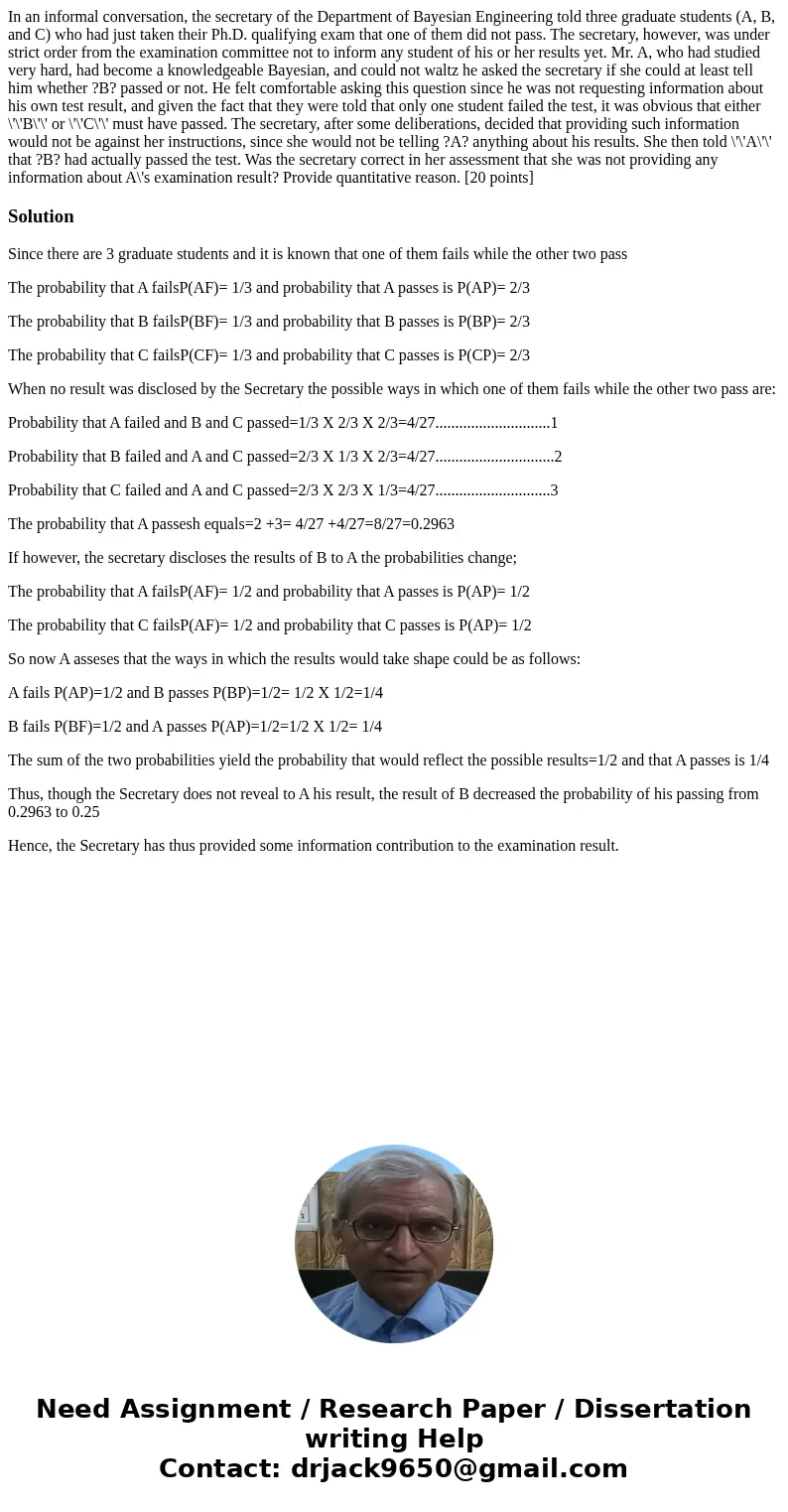In an informal conversation the secretary of the Department
Solution
Since there are 3 graduate students and it is known that one of them fails while the other two pass
The probability that A failsP(AF)= 1/3 and probability that A passes is P(AP)= 2/3
The probability that B failsP(BF)= 1/3 and probability that B passes is P(BP)= 2/3
The probability that C failsP(CF)= 1/3 and probability that C passes is P(CP)= 2/3
When no result was disclosed by the Secretary the possible ways in which one of them fails while the other two pass are:
Probability that A failed and B and C passed=1/3 X 2/3 X 2/3=4/27.............................1
Probability that B failed and A and C passed=2/3 X 1/3 X 2/3=4/27..............................2
Probability that C failed and A and C passed=2/3 X 2/3 X 1/3=4/27.............................3
The probability that A passesh equals=2 +3= 4/27 +4/27=8/27=0.2963
If however, the secretary discloses the results of B to A the probabilities change;
The probability that A failsP(AF)= 1/2 and probability that A passes is P(AP)= 1/2
The probability that C failsP(AF)= 1/2 and probability that C passes is P(AP)= 1/2
So now A asseses that the ways in which the results would take shape could be as follows:
A fails P(AP)=1/2 and B passes P(BP)=1/2= 1/2 X 1/2=1/4
B fails P(BF)=1/2 and A passes P(AP)=1/2=1/2 X 1/2= 1/4
The sum of the two probabilities yield the probability that would reflect the possible results=1/2 and that A passes is 1/4
Thus, though the Secretary does not reveal to A his result, the result of B decreased the probability of his passing from 0.2963 to 0.25
Hence, the Secretary has thus provided some information contribution to the examination result.

 Homework Sourse
Homework Sourse